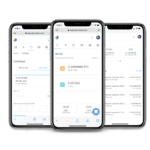8 Best Practices for Accepting Bitcoin Payments with OpenNode4 min read
Reading Time: 3 minutesThe following best practices for accepting Bitcoin payments will help improve both business operations and the customer checkout experience.
1. Set up an underpayment threshold to keep acceptance rates high
When OpenNode generates a checkout for a product or service, the payer must correctly enter the proper amount of Bitcoin to complete it. If they don’t enter enough, the checkout will result in an underpayment. Underpayments most often occur when the payer forgets to include a few extra satoshis to cover the network fees for an on-chain Bitcoin transaction. This is even more likely to occur if the payer is paying from an exchange platform wallet; keep reading for details.
OpenNode offers an underpayment threshold feature, which lets users select a minimum payment discrepancy between 0.1 – 5% to accept underpayments. Selecting an underpayment threshold keeps payment acceptance high while reducing the downside risk of an abandoned checkout.
Learn more about how to set up underpayment thresholds here.
2. Collect email address from Bitcoin customers
Collecting customer emails as a part of any checkout flow will allow OpenNode to contact payers about underpayments should they occur. Once OpenNode contacts the payer, they will have the opportunity to add more Bitcoin to the checkout (top-up*) or request a refund.
Learn how OpenNode processes underpayment returns here.
3. Encourage customers to use Bitcoin/Lightning Network wallets, not wallets from exchange platforms
Mobile and desktop wallets are purpose-built to manage network fee payments whereas exchange platform wallets are not. It is best practice to instruct customers to use a Bitcoin/Lightning wallet application to complete payments by either opening in the wallet, scanning the QR code, or copying/pasting the BTC address. There are many wallet applications across various mobile and desktop operating systems, here are some recommendations:
• Blue wallet – A custodial or non-custodial wallet (depending on configuration) with On-chain and Lightning payment capability. Users also have the ability to purchase Bitcoin directly on the wallet through P2P exchange HodlHodl. (Google Play/App Store/Mac)
• Wallet Of Satoshi – A custodial wallet that supports Lightning payments. (Available Google Play/App Store)
• Breez Wallet – An open-source non-custodial wallet with easy Lightning network channel set-up. (Google Play/App Store)
• Electrum Wallet – An open-source non-custodial wallet on Desktop and mobile with easy Lightning network channel set-up. (Google Play/Linux/PC/MacOS/Python)
4. Suggest exchange users add a small fee buffer (0.0002 BTC) to payments to improve completion
Some customers may insist on using an exchange platform wallet to complete checkouts. In that case, encourage them to add a few extra satoshis (0.0002 BTC) to make sure that they cover the Bitcoin on-chain network fees. This makes a drastic improvement in payment acceptance rates from exchange platform wallets.
5. Set up Automatic Currency Conversion if you don’t want to hold Bitcoin
OpenNode offers an Automatic Currency Conversion feature that allows merchants to accept Bitcoin payments and immediately exchange it into any of our supported local currencies at the time of transaction. This feature offers important protection for merchants who want to accept Bitcoin but do not want exposure to any Bitcoin price volatility.
Learn more about the Automatic Currency conversion feature here.
6. Create Bitcoin content to help customers understand Bitcoin better
Creating a landing page or help center section with information pertaining to these best practices is a vital way to educate customers on how to use Bitcoin. Doing this will keep acceptance rates high and improve customer trust. GiftOff, an online gift card business, educates its customers about Bitcoin and digital currencies in their FAQ.
7. Promote Bitcoin payments
Actively informing your customers that you accept Bitcoin – be it through social media campaigns, user interface upgrades, or dedicated content on your site – will go a long way toward driving Bitcoin volume. Remember, accepting Bitcoin payments means lower costs and quicker settlement times for your merchant account.
Bitcoin users are heavily engaged on Twitter. Engaging with OpenNode’s Twitter account and other prominent Bitcoin influencers is a great customer acquisition model.
8. Provide discounts on Bitcoin payments to drive profits
There are two ways that discounts on Bitcoin payments drive profit: First, you can provide your goods or services at lower than market rate because you have lower payment processing fees. Second, Bitcoin is the best performing asset of the 2010 decade. For example, Bitcart uses OpenNode to sell Amazon gift cards at a 15% discount. This may seem like too steep a discount to be sustainable, but Bitcoin isn’t like other monies. Since Bitcart.io started accepting Bitcoin with OpenNode (Feb 2019), the Bitcoin price has grown over 400% (August 2020).

